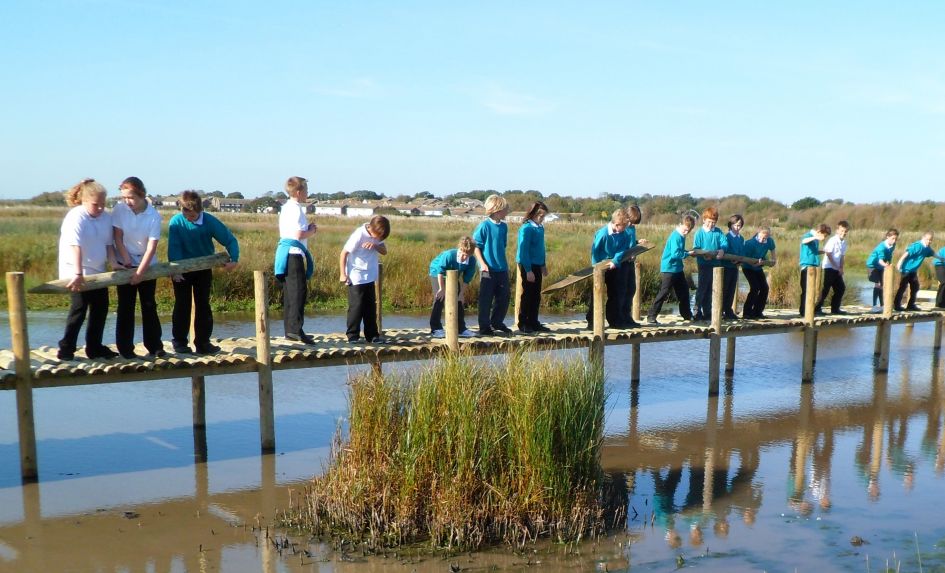There is a misconception among the teaching profession, the media and the general public, that the Health and Safety Executive (HSE), the government and Ofsted are all against the idea of children being exposed to danger within schools. Too many people believe that schools are prevented from giving their children experiences which involve risk.
The reality is that every school can take risks and engage in ‘dangerous’ activities, in the same way that I have done at my school for years – there are no individuals or organisations stopping them from doing so. The reality is that the government, Ofsted and the HSE would love to see schools embracing danger, and are in fact encouraging them to do so.
Dispelling the myths
In 2016, the former HSE Chair, Dame Judith Hackitt, and I set out to dispel these myths, working with the BBC, The Times and other national publications to get our message across.
In one interview, Dame Judith, then representing the HSE, was asked whether certain activities were banned in schools. Said list of ‘banned’ activities included children playing with conkers, having snowball fights and others around which some which common media myths have been perpetuated over the years. Dame Judith made it clear that these activities had never been banned by the HSE, and that any suggestion they had been was rather the product of misrepresentation in the national press.
She and I continued to try and explain in the media that coping with risk and danger is crucial to a child’s education, and should become a key part of the school curriculum. She said that children were suffering under an ‘excessively risk-averse’ culture in schools that wasn’t adequately preparing them for later life, and emphasised that children should instead be encouraged to climb trees and play games where there might be a risk of injury.
Later, in a speech she gave at the Royal Academy of Engineering, she further criticised this risk-averse culture in schools, describing it as ‘nonsensical’ and calling for an end to what had become a ‘bureaucratic culture of fear’. She then proceeded to state that, “Overprotective parents and risk-averse teachers who do not enable children to learn to handle risk will lead to young adults who are poorly equipped to deal with the realities of the world around them, unable to discern real risk from trivia, not knowing who they can trust or believe”.
Cotton wool culture
The only people preventing children from having these important experiences are those who decide on what activities a school gets to pursue – and too often, those decisions stem from people’s fears and a willingness to believe everything written in newspapers.
This is surely no longer acceptable, given that the most senior organisation responsible for health and safety in the country actively wants us to embrace risk and danger with our children in an intelligent and conscientious manner. Yet somehow, despite a huge volume of accurate and positive national press coverage on the subject, many headteachers, teachers and parents still believe in the media myths. I’ve even written a book [Playing with Fire: Embracing Risk and Danger in Schools, published by John Catt] which explains in detail how they can deliver activities such as those described opposite within a school setting.
Ultimately, the only people who can change the cotton wool culture surrounding children at school are headteachers and other senior leaders. I hope that they seize the HSE’s message of permission and ditch those negative beliefs in favour of the truth. It really is down to the profession now…
What we do
Children at West rise Junior school engage in The following activities, often on an area of adjacent wetland we lease from the local authority
Smelting
Every child has the opportunity to smelt tin and copper to make bronze. The children work leather bellows that fire the earth furnace we’ve built, and as they pour the molten metal into various moulds, their eyes light up with excitement and wonder as the metal hardens. Within minutes, the children will have made their own medallion or arrowhead out of bronze.
Archery and shooting
Each child gets to use bows and arrows that they have made themselves, firing their arrows at various targets. We also teach our children to shoot clay pigeons with shotguns and engage in target practice using air rifles. Many children also learn to hunt with gun dogs and find out about ferreting for rabbits.
Lighting fires
By regularly lighting and tending open fires, our children know that they will provide much needed heat when it’s very cold and that they can be used to boil kettles to make hot chocolate, coffee and tea. Every child further learns to cook over an open fire, preparing stews and fish.
Dyeing and spinning
The children learn how to make natural dyes from elderberries and other plant materials collected on their way to the wetland, which are then used to dye wool provided by our flock of sheep. The sheep themselves will have been bottle fed as sock lambs by the children back at the main school site the previous year. Once dyed, the wool is spun using spindles which the children will also have made.
Herding
As well as sheep, we also rear a herd of Asian water buffalo on the school land. The water buffalo will usually make their way across the land to see what the children are up to during the activities they’re are engaged in, adding to the children’s sense of awe and wonder at the world.
Rain or shine
Whatever the weather, our children will be working outside. They will frequently be chopping wood, flint knapping and foraging in the rain; some of the smaller children may be knee-deep in puddles of water as they trek across the land.
Mike Fairclough is the Headteacher at West Rise Junior School; follow @westrisejunior










